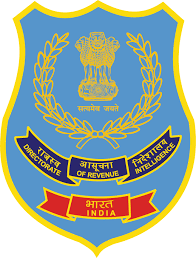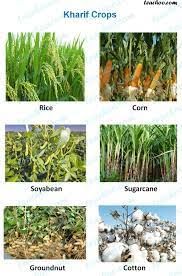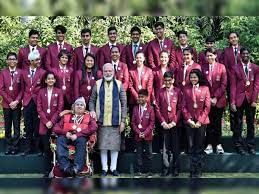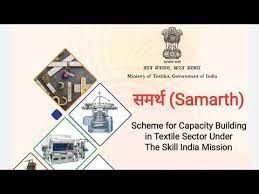UPSC Daily Current Affairs- 12th July 2023 | Current Affairs & Hindu Analysis: Daily, Weekly & Monthly PDF Download
GS-I
Demographic transition and change in women’s lives
Why in News?
The observance of World Population Day (11 July) provides an opportunity to reflect upon India’s demographic journey and its transformative impact on the lives of its citizens, particularly women. This article presents insights and perspectives on how population growth, fertility decline, and social norms have influenced various aspects of women’s lives in India.
Central idea
- From a population of 340 million at Independence to a staggering 1.4 billion today, India has experienced remarkable growth fueled by advancements in public health, diminished starvation, and medical breakthroughs. This demographic transition has had profound implications for Indian women throughout their lives, presenting both positive and negative changes.
Challenges Faced by Indian Women
- Son Preference and Gender Bias: Indian society’s preference for sons is reflected in the sex ratio imbalance. The number of girls per 100 boys under the age of five dropped from 96 to 91 between 1950 and 2019. This decline can be attributed to practices such as sex-selective abortion and the neglect of sick daughters, resulting in limited opportunities and discrimination against girls.
- Early Marriage and Childbearing: The early marriage and childbearing continue to be significant challenges for Indian women. The average age at first birth has remained low, with women born in the 1980s still having a first birth below 22 years of age. Early motherhood limits women’s educational and employment prospects, perpetuating gender inequality.
- Limited Access to Education: While recent improvements have been made, access to quality education remains limited for many girls and women in India. The article emphasizes that although over 70% of girls enroll in secondary education, early marriage and childbearing restrict their educational opportunities, hindering their skill development and access to better employment prospects.
- Gender-based Violence and Harassment: There is prevalence of gender-based violence and harassment, including domestic violence, dowry-related violence, and sexual harassment. Such incidents negatively impact women’s physical and psychological well-being, restrict their freedom, and limit their ability to fully participate in society.
- Limited Economic Opportunities: Gender pay gaps, occupational segregation, and biases in hiring and promotion processes contribute to limited economic opportunities for women in India. The burden of unpaid domestic and caregiving work falls disproportionately on women, hindering their ability to engage in paid employment and achieve economic empowerment.
- Lack of Social and Financial Support: The widowed or elderly women often lack adequate social and financial support systems. Dependence on male family members, particularly sons, for financial support can perpetuate gender inequality and leave women vulnerable to economic hardships, social isolation, and limited access to healthcare and pension benefits
Aging women and its implications
- Increase in Proportion: The proportion of the female population aged 65 and above has risen significantly over the years. Between 1950 and 2022, the proportion of women aged 65 and above increased from 5% to 11% and is projected to reach 21% by 2050.
- Outliving Husbands: Women tend to marry older men and are more likely to outlive their husbands. As a result, a higher percentage of elderly women are widowed compared to men in the same age group. The 2011 Census shows that while only 18% of men above age 65 are widowed, about 55% of the women are widowed.
- Financial Challenges: Widowed women often face financial difficulties, as they may lack access to savings, property, and other financial resources. This dependence on their husbands and subsequent reliance on their children, primarily sons, can perpetuate the cycle of son preference.
- Limited Agency: Widowed women may experience limited decision-making power and agency in their later years. Their dependence on sons for support can restrict their ability to make independent choices and contribute to a sense of social and economic vulnerability.
Changing Dynamics for Indian Women
- Difficulty in ensuring the birth of a son: With families having fewer children, the likelihood of not having a son increased. Social norms, patrilocal kinship patterns, and financial insecurity reinforced the preference for sons. This led to practices such as sex-selective abortion and neglect of sick daughters.
- Decreased years spent on active mothering: As fertility rates declined, women had more time for education and employment. NFHS finds that the number of years women spend caring for children under five declined from 14 years in 1992-93 to eight in 2018-20; the years spent caring for children ages six to 15 dropped from 20 to 14 years.
- Persistent early marriage and childbearing: While women’s educational attainment increased, with over 70% of girls enrolling in secondary education, early marriage and childbearing remain the predominant forces defining women’s lives. As a recent article by Park, Hathi, Broussard, and Spears documents, the average age at first birth has hardly budged about 20 for women born in the 1940s and still remains well below 22 years for those born in the 1980s.
What is mean by Gender Dividend?
- Gender Dividend refers to the concept that societies can achieve greater productivity and equity by investing in women and girls and closing gender gaps, particularly in the labor market.
- It emphasizes that by realizing the economic potential of women and girls through increased investments and opportunities, societies can become more productive and equitable.
Strategies to harness the Gender Dividend
- Education and Skill Development: Promote gender equality in education by ensuring equal access to quality education for girls and women. Encourage girls’ enrollment and retention in schools, address barriers to education, and provide skill development programs that equip women with relevant skills for employment.
- Economic Empowerment: Create an enabling environment for women’s economic participation by addressing gender disparities in the labor market, promoting entrepreneurship, and ensuring equal pay for equal work. Implement policies and programs that support women’s access to financial resources, credit, and business opportunities.
- Women’s Leadership and Decision-making: Increase women’s representation and participation in leadership positions across sectors, including politics, business, and public institutions. Encourage women’s involvement in decision-making processes at all levels to ensure their perspectives and voices are heard.
- Legal Reforms and Gender Equality: Enact and enforce laws that protect women’s rights and promote gender equality. Address discriminatory practices, such as early marriage, dowry, and violence against women. Strengthen the implementation of existing laws to ensure justice and protection for women.
- Health and Well-being: Improve women’s access to healthcare services, including reproductive healthcare, maternal health, and preventive care. Address specific health issues affecting women, such as gender-based violence, reproductive health concerns, and mental health.
- Social Support and Safety: Establish social support systems that provide safety nets for women, particularly vulnerable groups such as widows, elderly women, and single mothers. Create awareness campaigns to challenge social norms and attitudes that perpetuate gender inequality and violence against women.
- Engaging Men and Boys: Engage men and boys as allies in promoting gender equality and challenging harmful gender norms. Encourage men’s involvement in caregiving, domestic responsibilities, and advocating for women’s rights.
- Data Collection and Monitoring: Collect sex-disaggregated data and conduct gender analysis to identify gaps, monitor progress, and inform evidence-based policymaking. Regularly evaluate and measure the impact of gender equality initiatives to ensure accountability and guide future interventions.
Strategies for enhancing childcare access
- Utilize National Rural Employment Guarantee Scheme (NREGS): Consider making staffing crèches an acceptable form of work under NREGS. This would involve using NREGS workers to help staff childcare centers, thereby expanding access to affordable childcare services.
- Leverage the Self-Help Group Movement: Harness the self-help group movement to establish neighborhood childcare centers in urban and rural areas. This can involve utilizing the network and resources of self-help groups to set up and manage childcare facilities.
- Expand Anganwadis: Increase the reach and scope of Anganwadis, which are government-funded centers providing integrated childcare and early education services. Expand their capacity and include provisions for crèche services to accommodate working parents.
- National Rural Livelihood Mission (NRLM): Integrate childcare services within the NRLM framework, which aims to enhance the livelihoods of rural households. This can involve incorporating childcare as part of the skill development and income-generation activities supported by NRLM.
- Financial Support for Childcare: Explore the implementation of subsidy programs or financial assistance schemes to make childcare more affordable for low-income families. This could include income-based subsidies, vouchers, or tax credits to alleviate the financial burden of childcare expenses.
- Neighbourhood Childcare Centers: Encourage the establishment of neighborhood-based childcare centers, particularly in urban areas, to cater to the local community’s childcare needs. This approach ensures proximity and accessibility for parents, making it easier for them to balance work and childcare responsibilities.
- Recognition of Childcare as Work: Recognize the valuable work of childcare providers and promote the professionalization of the childcare sector. This can include offering training programs, certification, and support systems to improve the quality of care provided by childcare professionals
Conclusion
- Realizing India’s demographic dividend requires fully harnessing the gender dividend by empowering women throughout their lives. Access to childcare plays a pivotal role in facilitating women’s labor force participation. Efforts to improve childcare access should be combined with strategies to challenge patriarchal norms and create an enabling environment for women’s education, employment, and asset ownership. By embracing these measures, India can empower its women and achieve inclusive and sustainable development.
Source: The Hindu
Pradhan Mantri Rashtriya Bal Puraskar
Why in News?
Recently, the last date of submission for the Pradhan Mantri Rashtriya Bal Puraskar was extended.
Background:-
- The Ministry of Women and Child Development has extended the last date of submission for the Pradhan Mantri Rashtriya Bal Puraskar till the 31st of August,2023.
About Pradhan Mantri Rashtriya Bal Puraskar:-
- The Awards are announced on December 26 on ‘Veer Bal Diwas’.
- Veer Baal Diwas: marks a tribute to the martyrdom of Guru Gobind Singh’s sons.
- The awards are conferred by the President of India at New Delhi at a special ceremony/function to be held in January every year.
- Historical Background: It was instituted in 1979 as the National Child Welfare Awards, renamed in 2018 as Bal Kalyan Puraskar.
- Objective: It is organized to celebrate the energy, determination, ability, zeal and enthusiasm of our children.
- Field: This national-level award is given in the fields of Bravery, Sports, Social Service, Science and Technology, Environment, Arts and Culture, and Innovation.
- Awarded by: Ministry of Women and Child Development.
Eligibility:-
- A child who is an Indian Citizen and residing in India and is not exceeding 18 years (as of the last date of receipt of application/nomination).
- The act/incident/achievement should have been within 2 years of the last date of receipt of application/nomination for the year of consideration.
- The applicant should not be a previous recipient of the same award earlier in any category (including National Child Awards for Exceptional Achievement, as were awarded by the Ministry earlier)
Nomination can be done by:-
- State Governments, Union Territory Administrations, District Collectors/District Magistrates, and Panchayati Raj Institutions.
- All Central and State School Boards, Kendriya Vidyalaya Sangathan, Navodaya Vidyalaya Sangathan, National Commission for Protection of Child Rights, State Commissions for Protection of Child Rights and National Institute of Public Cooperation and Child Development.
- Ministry of Social Justice, Department of Disabilities, Department of School Education in Ministry of Education, all state Departments of School Education, Ministry of Youth Affairs, Department of Sports, Sports Authority of India, Ministry of Culture, Ministry of Science and Technology, Ministry of Environment & Forests, Ministry of Defence, Ministry of Home Affairs, and Press Information Bureau.
- National Selection Committee.
Selection Process
- The applications received are first scrutinized by the Screening Committee.
- The final selection is done by the National Selection Committee.
Decoration:-
- Medal
- Cash prize of Rs. 1,00,000
- Certificate and citation
The Pradhan Mantri Rashtriya Bal Puraskar is given under two categories:-
- Bal Shakti Puraskar
- It is given by the Government of India every year to recognize exceptional achievements of children in various fieldse., innovation, scholastic achievements, social service, arts & culture, sports and bravery.
- Eligibility: A child who is an Indian Citizen residing in India and is between 5-18 years of age.
- Decoration: A medal, a cash prize of Rs. 1,00,000, book vouchers worth Rs.10,000, a certificate and a citation.
- Bal Kalyan Puraskar
- It is given as recognition to Individuals and Institutions, who have made an outstanding contribution towards service for children in the field of child development, child protection and child welfare.
- Eligibility: An individual who is an Indian Citizen residing in India and should have attained the age of 18 years or above (as of 31st August of the respective year).
- S/he should have worked for the cause of children for not less than 7 years.
- The institution should not be entirely funded by the government and should have been in the field of child welfare for 10 years and performing consistently in the field.
Source: AIR
GS-II
Directorate of Revenue Intelligence

Why in News?
Recently, the Directorate of Revenue Intelligence seized over 48 kg of gold paste estimated to be worth 25 crore rupees at Surat international airport.
Background:-
- DRI said that it has busted a smuggling syndicate by arresting the four persons.
- It said that based on specific intelligence, DRI officers intercepted three passengers arriving from Sharjah by an Air India Express Flight suspected to be carrying gold in paste form.
About Directorate of Revenue Intelligence:-
- It is the apex anti-smuggling agency of India.
- Implementing Agency: Central Board of Indirect Taxes & Customs, Ministry of Finance.
- The Central Board of Excise and Customs (CBEC) was renamed as the Central Board of Indirect Taxes and Customs (CBIC) in 2018 after the rollout of Goods and Services Tax (GST)
- Established: 1957.
- Objective: It is tasked with detecting and curbing the smuggling of contraband, including drug trafficking and illicit international trade in wildlife and environmentally sensitive items, as well as combating commercial frauds related to international trade and evasion of Customs duty.
- HQ: New Delhi.
- The DRI has also been designated as the lead agency for Anti-Smuggling National Coordination Centre (SCord).
Functions of DRI:-
- Collection of intelligence about the smuggling of contraband goods, narcotics, under-invoicing etc.
- Analysis and dissemination of such intelligence to the field formations for action and working on such intelligence, where necessary.
- Keeping watch over important seizures and investigation cases.
- Associating or taking over the investigations which warrant specialized handling by the Directorate.
- Guiding important investigation/prosecution cases.
- Keeping liaison with foreign countries, Indian Missions and Enforcement agencies abroad on anti-smuggling matters.
- To keep liaison with C.B.I. and through them with the INTERPOL.
- To refer cases registered under the Customs Act to the Income Tax Department for action under the Income Tax Act.
- To keep statistics of seizures and prices/rates etc.
- To study and suggest remedies for loopholes in law and procedures to combat smuggling.
Source: AIR
Electoral Bonds chief source of donations for parties: Report

Why in News?
Electoral bonds have emerged as the primary source of donations for political parties in India, with the BJP securing the majority share.
- A report by the Association of Democratic Reforms reveals that between 2016-17 and 2021-22, national and regional parties received a total donation of ₹9,188.35 crore through electoral bonds.
- The BJP received ₹5,271.97 crore, while other national parties collectively received ₹1,783.93 crore.
Political Donations under Electoral bonds scheme
- Breakdown of donations: Over the six-year period, the 31 analyzed political parties received a total of ₹16,437.63 crore in donations. Of this, 55.9% came from electoral bonds, 28.07% from the corporate sector, and 16.03% from other sources.
- BJP leads the pack: The BJP declared donations worth ₹5,271.97 crore through electoral bonds, surpassing the total donations of all other national parties combined.
- Congress and regional parties: The Congress received the second-highest amount through electoral bonds, with ₹952.29 crore (61.54% of total donations). The Trinamool Congress received ₹767.88 crore (93.27% of total donations).
- Regional parties’ reliance on bonds: Regional parties such as the BJD, DMK, and TRS received a significant portion of their total donations from electoral bonds.
- Surge in bond donations: National parties witnessed a 743% increase in donations through electoral bonds between 2017-18 and 2021-22, while corporate donations only rose by 48%.
Key features of Electoral Bonds Scheme
- Introduction of Electoral Bond Scheme: The Electoral Bond Scheme 2018 was introduced for electoral funding during the crucial time period analyzed in the report.
- Removal of donation limit: The Finance Act, 2017 eliminated the previous cap of 7.5% of a company’s average three-year net profit for political donations.
- Purchase and Donation: Any Indian citizen or company incorporated in India can purchase Electoral Bonds from select branches of the State Bank of India. The bonds can be bought in denominations of ₹1,000, ₹10,000, ₹10 lakh, and ₹1 crore. The purchaser can then donate the bonds to an eligible political party of their choice.
- Eligibility and KYC: To purchase Electoral Bonds, the buyer must fulfill the Know Your Customer (KYC) norms and make the payment from a bank account. Only individuals and companies with Indian citizenship or incorporation can participate in the scheme.
- Bond Validity: Electoral Bonds have a life of 15 days, ensuring that they do not function as a parallel currency.
- Anonymity and Disclosure: Donors who contribute less than ₹20,000 to political parties through Electoral Bonds are not required to provide their identity details, such as the Permanent Account Number (PAN). However, the identity of the donor is known to the bank.
- Redemption and Eligible Parties: Only political parties registered under Section 29A of the Representation of the People Act, 1951, and securing at least one percent of the votes in the last general election are eligible to receive Electoral Bonds. The bonds can be encashed only through a bank account with the authorized bank.
Issues with the Scheme
- Lack of Transparency: The scheme has faced criticism for enabling opaque political funding. While the identity of the donor is captured, it is not revealed to the party or the public, limiting transparency.
- Limited Tax Benefits: Donations made through Electoral Bonds may not qualify for income tax breaks, potentially discouraging donors from participating in the scheme.
- Privacy Concerns: The privacy of donors may be compromised as the bank will have knowledge of their identity.
- Differential Benefits: The scheme can potentially favor parties in power, as the government can access information about the donors and the funds received.
- Unlimited Donations: Amendments in the Finance Act of 2017 allow for unlimited donations from individuals and foreign companies to political parties without disclosing the sources of funding, raising concerns about the influence of money in politics.
Source: Indian Express
About SAMARTH scheme
Why in News?
Recently, the panel of SAMARTH scheme implementing partners has been broadened with the empowerment of 43 new implementing partners and an additional target of training around 75,000 beneficiaries has been allocated to the training partners.
Key Facts about SAMARTH scheme
- Scheme for Capacity Building in Textiles Sector (SAMARTH) is a demand-driven and placement-oriented umbrella skilling programme.
- It aims to incentivize and supplement the efforts of the industry in creating jobs in the organized textile and related sectors, covering the entire value chain of textiles, excluding Spinning and Weaving.
- In addition to the entry-level skilling, a special provision for upskilling/ re-skilling programme has also been operationalized under the scheme towards improving the productivity of the existing workers in the Apparel & Garmenting segments.
- The implementation period of the scheme is up to March 2024.
- Nodal Ministry: Ministry of Textiles.
- Under this scheme skilling programme is implemented through the following Implementing Agencies:
- Textile Industry.
- Institutions/Organizations of the Ministry of Textiles/State Governments having training infrastructure and placement tie-ups with the textile industry.
- Reputed training institutions/ NGOs/ Societies/ Trusts/ Organizations/ Companies /Start-Ups / Entrepreneurs active in the textile sector having placement tie-ups with the textile industry.
Source: The Hindu
GS-III
Kharif crops

Why in News?
Recently, the Kharif crops took a severe hit by intense and unprecedented rainfall across India.
Background:-
- Record-breaking, heavy to extremely heavy rainfall in different regions, especially in the northwestern states of Himachal Pradesh, Uttarakhand, Punjab, Haryana and Uttar Pradesh, has now dealt a crushing blow by inundating the fields of already sown crops.
- The India Meteorological Department (IMD) has advised farmers to drain out excess water from their fields so that standing crops are saved from rotting.
About India Meteorological Department
- Established:1875.
- Ministry: Ministry of Earth Sciences.
- HQ: New Delhi.
- It is the principal agency responsible for meteorological observations, weather forecasting and seismology.
- IMD is also one of the six Regional Specialized Meteorological Centres of the World Meteorological Organization.
- Regional Specialized Meteorological Centre (RSMC) of Tropical Cyclones in New Delhi is responsible for naming the cyclones in the northern Indian Ocean region.
About Kharif crops:-
- India is a peninsular country where the climate is mostly driven by monsoon.
- Due to this reason, India is endowed with a variety of seasons.
- These seasons, in turn, provide different weather conditions to crops, which eventually lead to different cropping patterns.
- Based on seasons, crops are classified into the following:
- Kharif crops
- Rabi crops
- Zaid crops
- Kharif crops, are cultivated and harvested in the monsoon season.
- Naming: The word “Kharif” is Arabic for autumn since the season coincides with the beginning of autumn or winter.
- Sowing and Harvesting: These are sown at the beginning of a monsoon season and farmers harvest them at the end of the season.
- Time Period: The Kharif season differs in every state of the country but is generally from June to September.
- One of the important features of Kharif crops is that they need a lot of water and hot weather for proper growth.
- Kharif crops examples: Rice, Cotton, Maize etc.
- India is the second-largest producer of rice in the world after China.
- India accounts for approximately 20% of the world’s rice production.
Source: DTE
Why Indian manufacturing’s productivity growth is plummeting and what can be done?

Why in News?
According to a recent study Productivity growth in Indian manufacturing has been slowing since the 1990s, with a more pronounced decline in the years leading up to the Covid-19 pandemic. Exploring the causes behind this decline is crucial to develop effective strategies for revitalizing the sector.
Central idea
- India’s manufacturing sector has long been a matter of concern for policymakers and the subject of extensive academic research. The government has consistently aimed to increase the share of manufacturing in the country’s GDP. However, despite efforts to promote manufacturing, the sector’s contribution and overall employment has remained stagnant.
Key Facts about Manufacturing Productivity in India
- Slowing Growth: Productivity growth in India’s manufacturing sector has been declining since the 1990s, with a significant acceleration in the mid-2010s and leading up to the Covid-19 pandemic.
- Gap with the United States: India’s manufacturing productivity per worker is considerably lower compared to the United States. In 2020, it was only around a fifth of the productivity level in the US.
- Regional Disparities: There are wide variations in manufacturing productivity across Indian states. Western and Central Indian states tend to have higher average productivity, while Southern and Eastern states have lower productivity levels. This contrasts with the GDP per capita rankings, where Southern states generally have higher incomes than their Western and Central counterparts.
Potential reasons behind the decline in manufacturing productivity
- Slow Manufacturing Sector Growth: The overall growth rate of India’s manufacturing sector has been decreasing, particularly since around 2015. This sluggish growth can limit the opportunities for productivity improvement and hinder overall sector performance.
- Insufficient Investments: Inadequate investments in technology, infrastructure, and research and development (R&D) can hamper productivity growth. Limited capital expenditure by firms may result in outdated machinery, inefficient processes, and lower productivity levels.
- Skill Mismatch: The manufacturing sector requires a specific skill set, and a mismatch between the skills possessed by the labor force and the skills demanded by the industry can impede productivity. The lack of trained and skilled workers in areas such as advanced manufacturing techniques, automation, and specialized operations may contribute to lower productivity levels.
- Informality and Informal Labor Market: The prevalence of informal employment in the manufacturing sector can hinder productivity growth. Informal workers often lack access to training, social security benefits, and stable employment conditions, which can lead to lower productivity levels compared to formal employment arrangements.
- Regulatory Challenges: Cumbersome regulatory processes, including complex labor laws, bureaucratic red tape, and regulatory compliance burdens, can hamper productivity growth. These challenges may discourage investment and hinder the adoption of efficient production practices.
- Infrastructure Deficiencies: Inadequate infrastructure, such as poor transportation networks, unreliable power supply, and limited access to technology and connectivity, can negatively impact manufacturing productivity. Insufficient infrastructure can increase costs, disrupt supply chains, and hinder efficiency in production processes.
- Inefficient Supply Chains: Weak linkages and coordination within supply chains can contribute to lower productivity in manufacturing. Challenges such as fragmented value chains, inefficient logistics, and inadequate coordination between suppliers, manufacturers, and distributors can result in delays, increased costs, and reduced overall productivity.
- Lack of Innovation and Technology Adoption: Limited emphasis on innovation, research, and development, as well as a slower adoption of advanced technologies, can constrain productivity growth in the manufacturing sector. Insufficient investment in technological upgrades and a reluctance to adopt new manufacturing techniques can lead to lower productivity compared to global standards.
Declining Employment in Manufacturing
- Stagnant Formal Employment: Formal employment in India’s manufacturing sector has remained stagnant, indicating limited job creation in established enterprises. This stagnation is a troubling aspect, considering that formal employment offers better job security and benefits to workers.
- Shrinking Informal Employment: Informal employment, which traditionally made up a substantial portion of manufacturing jobs, has also experienced a decline. This trend raises concerns about the livelihoods of vulnerable workers who are often engaged in low-paying and precarious work.
- Drastic Drop in Employment: Data from the Center for Monitoring Indian Economy (CMIE) reveals a significant drop in manufacturing employment from over 51 million in 2016 to less than 36 million in 2023, marking a decline of over 30%. This decrease in employment is alarming, especially as India’s working-age population continues to grow.
Implications of Shrinking Employment
- Unemployment Challenges: The decline in manufacturing employment exacerbates the challenges of unemployment, particularly for individuals seeking jobs outside the agricultural sector. It hampers the government’s objective of absorbing excess labor from agriculture and diversifying the workforce.
- Missed Opportunities for Poverty Reduction: The manufacturing sector has the potential to uplift millions of people out of poverty. However, the decline in employment opportunities hinders poverty reduction efforts and perpetuates income disparities.
What can be done?
- Boost Investments: Encouraging both domestic and foreign investments in the manufacturing sector can help upgrade infrastructure, improve technology adoption, and enhance productivity. This can be achieved through attractive investment policies, tax incentives, and easing of regulatory procedures.
- Skill Development and Training: Focusing on skill development programs tailored to the manufacturing sector can address the skill mismatch and enhance the capabilities of the workforce. Collaborating with educational institutions and industry associations to design training programs and apprenticeships can ensure a skilled labor force.
- Infrastructure Development: Prioritizing infrastructure development, including transportation networks, power supply, logistics, and digital connectivity, is essential for improving productivity. Investment in infrastructure projects can create an enabling environment for manufacturing activities and reduce operational inefficiencies.
- Regulatory Reforms: Streamlining regulatory processes, reducing bureaucratic complexities, and simplifying labor laws can create a business-friendly environment. Establishing a favorable regulatory framework can attract investments, foster innovation, and enhance productivity in the manufacturing sector.
- Research and Development (R&D): Encouraging R&D activities and innovation in the manufacturing sector can lead to technological advancements and productivity gains. Collaborations between industry, research institutions, and academia can facilitate knowledge transfer and promote innovation-driven manufacturing.
- Entrepreneurship and Start-up Ecosystem: Supporting entrepreneurship and nurturing a vibrant start-up ecosystem in manufacturing can bring fresh ideas, innovation, and competitiveness. Providing access to finance, mentorship programs, and incubation support can encourage entrepreneurial growth and drive productivity.
- International Collaborations: Strengthening international collaborations and partnerships can facilitate knowledge exchange, technology transfer, and best practice sharing. Engaging with global manufacturing networks can help Indian manufacturers learn from successful models and adapt to global standards.
Conclusion
- The findings of this study underscore the urgent need for policy interventions to address the challenges faced by India’s manufacturing sector. Encouraging investments in workers, improving labor market conditions, and promoting a conducive business environment are crucial steps that can help revitalize India’s manufacturing sector, enhance productivity, and lift millions out of poverty.
Source: DTE
|
38 videos|5269 docs|1114 tests
|



















